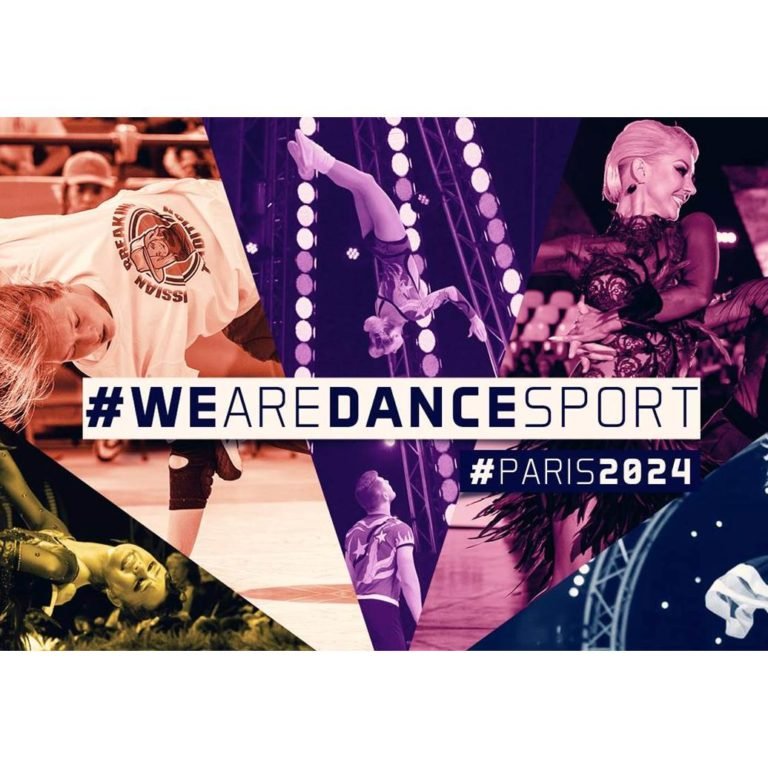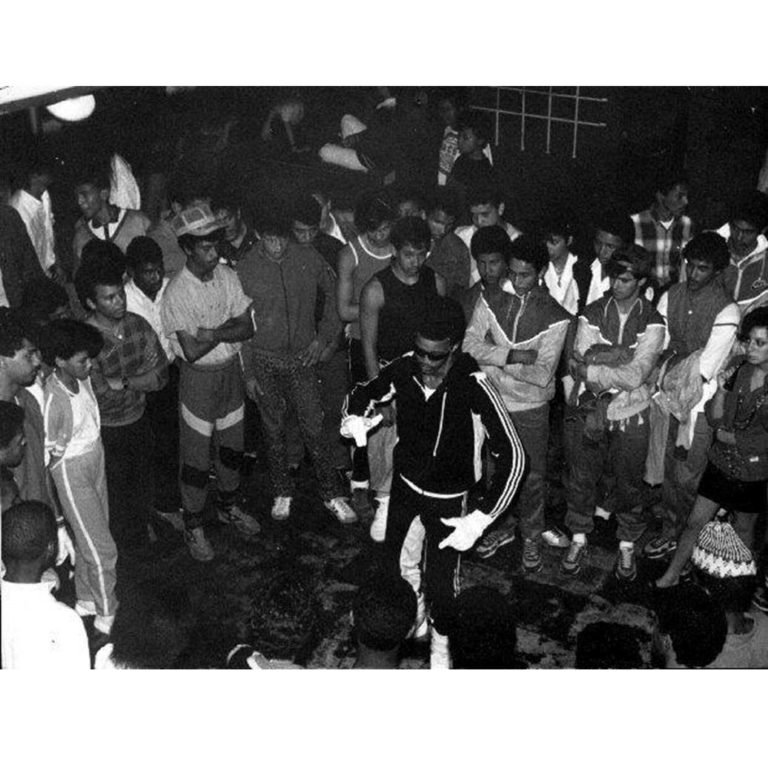Ingenuity is the adventure we are about to explore today with established creative Dance, Model and Actress Michelle Hughes. We are interested to find out how she found her dancing beat in the arts and entertainment industry of Cape Town, South Africa. We also reviewed her stunning short film Liminal on Vimeo. We are sure readers will take away some great tips and inspirational perspective from this tale of how Michelle established herself, the routes she took and what she has planned for her future.
Readers, we are delighted to share this conversation with Michelle Hughes.

As a dancer, producer and director, what is it like being a creative in the industry today?

That’s a loaded question… I think it’s what you make it. The industry will always come with its own challenges but I believe you have the choice to create your future and carve out a space in it if you’re willing to journey through the discomfort of trying something different. I think that finding clarity in your dreams and goals is crucial in navigating the industry because it will make the steps you need to take a lot clearer. Understanding that your journey will never look like anyone else’s will make that process a lot less painful.

What was your process of breaking into the industry and finding that clarity?

I always had dreams of dancing on stages with big artists and working in film and television. Coming from a farm in the Eastern Cape, the idea of a successful professional dance career had never been modelled to me and I had no idea how to make my dreams come true. Moving to Cape Town alone was the first challenge and understanding the dance culture here was the second. I started taking classes and found an agent – as one does. I worked on some commercials and gigs whilst studying film and then somehow booked a job as a backup dancer for Miley Cyrus. That was a pivotal moment for me in my career because I always felt like my dreams had been so far out of reach until that moment. I think it fuelled me to continue pushing.
It was only after that where I learned which steps would bring me closer to working my dream jobs. I became intentional about reaching out to people that had done what I wanted to do. I asked them questions and started training with them. I did so much research on dancers, dance programs, choreographers and people that were essentially working jobs that I wanted to work. I gained knowledge and the skills to better myself and the steps became clearer to me. Talent is the bare minimum, there’s so much beyond being a good dancer that will help you not only break into the industry but manage a long career in it as well.

Why do you think “just being a good dancer” is not enough to make it in the industry?

So many people have mentioned that as a dancer you are an artist, an athlete and a business and you need to treat yourself as such. I think being a good human needs to be added to that list. Half the time dance is signing up to so much more than just dancing and the people that are booking the jobs are there for a reason. You have to be human first and for all you know the people that are booking those jobs are probably amazing humans – they’re always on time, they’re easy to work with, they don’t moan and they just get on with it. Those attributes are far more valuable to a choreographer than you killing an eight.
Nine out of ten times, everyone in the audition room is talented – that’s why they’re there – but it comes down to how you carry yourself, whether you’re a nice person to work with and most importantly, whether or not you’re ready for the job. That’s a really important question to ask yourself because you want to be re-bookable. You don’t want to get your first big job and mess it up.
Reputation is everything in our industry and people talk. As much as it’s about “who you know,” it’s more about establishing trust with a choreographer or employer because of your work ethic and who you are as a person. It’s important to present yourself as a professional in the way you conduct business, in the way you show up to a rehearsal, in the way you train in an off season and in what you post on social media. You never know who’s watching and it’s a lot easier to control that when you’re naturally a nice person who has self-awareness and works hard.

As a creative that produces content, how do you feel about social media and how do you use it as a tool?

I think how you feel about social media is related to how you use it. I love social media for the platform it offers in terms of research and inspiration. As much as I get to share my work and hopefully inspire other people out there, I am very aware of the type of people I follow and how I engage with content. I follow people who inspire me and who contribute to the wellbeing of my mental health. Social media has given me access to some of my favourite dancers, artists and choreographers and I get to be inspired by what they do. I’ve used it to reach out to people, to ask questions and to observe the journeys of those I look up to. I get to see who they have trained with and what they’re working on. I get to witness a part of their journey and learn from that.
Nowadays, Instagram is your new portfolio and what you share matters. From a casting director’s point of view, the first 12 blocks should include a headshot, a body shot and a few videos of you dancing (in multiple styles if you can). Production teams don’t have the time to endlessly scroll through your feed to find a decent shot of your face. Use your highlight section for portfolio shots, a show reel, credits or work that you’ve done. Use your bio description to mention your skills and whether or not you have agency representation. Have a link available to a YouTube page, agency page, website etc. You want to do everything you possibly can to make it easier for them to book you or invite you to the audition. A good IG page already gives a great impression of professionalism and makes it harder for them to not book you.

You touched on mental health. Can you share more about your experiences surrounding this topic?

Yeah, of course! I’d say – work on it. Being mentally fit is just as important as being physically fit. As a dancer, you face constant rejection, disappointment and failure but how you view those words is what makes the difference in a dancer that will survive in this industry and one that will thrive. Often times we need to retrain our brains in how we think about ideas. I find that reflection and meditation serve me well in understanding my behaviour and breaking habits that have been holding me back. I try to practice self-awareness and filter what I consume via social media to maintain a healthy mindset that will drive me toward becoming the best version of myself. I love listening to podcasts that inspire me and that I can learn from as well.

How do you deal with the inevitable rejection that comes from being in the industry?

Don’t take anything personally, it will ruin you. There was a stage where the judgement and the no’s would hurt me so much that I would go home and be upset and obsess over what I could have done differently or that I wasn’t good enough. And upon reflection, I had to ask myself if it was really worth it and if it mattered and whether or not I cared. I came to the conclusion that I didn’t and that it wasn’t about me because what’s meant for you won’t pass you and sometimes that job just wasn’t meant for you. At the end of the day, I got to dance and showcase who I am as an artist and do what I love. Maybe that choreographer won’t pick me this time round because I wasn’t a good fit for that specific project, but I might be first on his list for another project. I think you have to bring yourself back to why you do what you do and why you started in the first place. It’s important to get away from the noise and hold onto the love that you have for dance.

How do you make a living as a dancer in Cape Town?

If I had a dollar for every time someone asked me this! Well, I think there are multiple ways to make a living as a dancer in Cape Town. By no means is it easy, but if it was, it probably wouldn’t be worth it. I know a lot of dancers that work as teachers for a stable income and occasionally book commercials or gigs. I also know dancers that have become social media influencers or that dabble in fitness or stunts and make a living working multiple jobs. I think it comes down to your personal passion and dreams. I think it’s really tough making a living as (just) a performer here because I think there’s a huge lack of opportunities which is why so many performers have skilled themselves in various art forms to work across different fields or disciplines. Versatility is key and creating a side hustle is helpful. I have always had a passion for telling stories, which is why I was attracted to film and directing. I built a business (The Hideout Collective – @thehideoutco) that would help me gain financial freedom and allow me to practice my craft and express myself in a different medium. I’m learning multiple skills for the purpose of longevity. I won’t be able to perform forever and I have a dream of moving into direction once I’ve lived out my performing dreams.

Do you have any advice for someone wanting to break into the industry?

Think about it. Really think about it because it’s just not worth your happiness. Your mental health and happiness will be tested every single day and a lot of people aren’t taught about that and develop depression or mental health issues throughout their dance careers while in the industry. If you’re not tough and you don’t have the ability to adapt in tough spaces, it’s not for you, regardless of how good of a dancer you are.

What do you think makes a dancer good?

As a dancer? In one answer… Movement quality. Not just as in performance, but as in how they deliver a step with their body in terms of intention, texture, dynamics etc.

What are 5 things that you think would make a great working dancer?

Versatility, professionalism, mental capacity, mental health and who you surround yourself with – your company.

You recently shared a dance work called Liminal, can you share more about the narrative and your creative approach on this project?













Images from Liminal

I think after surviving a year like 2020, many creatives found themselves in an in-between space filled with doubt and uncertainty. The work I created explores the emotions related to that space and holds a visual representation of what it could look and feel like. The piece starts with the main character lost in unfamiliar territory and standing before a threshold. She gets pulled into this world of the in-between where she experiences fear, confusion, doubt, disorientation, frustration and distraction by the other dancers in the piece. After a whirlwind of location changes and searching, she finds herself back at the same threshold she once stood before but this time, grounded with the intention of crossing over to the other side and into the ‘new’ based on the clarity she finds by finding her own strength in the eye of the storm. This project was very much born from personal experience and something that I thought would be incredibly relatable to many artists out there. So I gathered a group of creatives and allowed the project to take shape through the collective collaboration of every person in the team.

It’s interesting that you chose not to release the project on social media but by way of premiere and video on demand. What made you choose this option?


















Images from Liminal Project

I am always incredibly grateful to the creatives that trust in me and my vision and that are willing to jump on board my projects purely for the love of their craft or the opportunity to be a part of something but, I am trying to build a culture where dancers are compensated for their work. While I do not always have the means to remunerate each individual on the project, as an entrepreneur, I am creating a final product that can be sold. Often times as dancers we complain that we are not getting paid enough or at all but the argument is that dancers easily give it all away on social media platforms. When it comes to a class video and promoting yourself, absolutely, post away. There is a time and place for everything. But when it comes to creating a work that cost you time, effort and money, why on earth would you just give it away? It’s like creating an entire show and telling the audience they can watch it for free.
It’s tough enough to make a living as a dancer, we don’t need to make it more difficult for ourselves. We should be creating art and finding a way to monetize it. Not everything we do is about the money, but everything does cost money. In creating work that needs to be purchased to see, we place more value on ourselves and our craft. We give the impression that not everyone can do what we do – it’s not TikTok (no shade). We then get the chance to pay the team that helped us create the art. We constantly invest in ourselves and choose to give it away for free but complain when we are not valued. It’s time to change that mentality and build a new generation of artists that are not starving but paving a way for future generations that will pursue art as a career.

In a space of sudden change and uncertainty of the future, this is a world all to familiar to us as creatives and dancers especially during 2019 – 2022. Liminal the short film we rented on Vimeo, created by Michelle Hughes is a film that bursts with quality and truly left us wanting more.
Liminal might just be the birth of a new creative industry. The combination of artistic filming and the use of choreographic body language makes up for a film without words. Every angle captured a side to the tale, in a beautiful and mysteriously dreamy venue.
We are giving it a rating 4.5 out of 5.
Liminal is a powerful piece of art shot in motion. The quality story, venue and film required a very strong performance by the dancers. As dancers ourselves, we did spot a few moments where we felt the supporting dancers weren’t in time with the lead. We do believe that there is room for an interesting sequel of stories that may start a new trend you wouldn’t find on Tik Tok and we will be there to see it!.
Overall, we were amazed by this must-see. There is a movement here and if you don’t see it now, you will miss the Liminal of what’s about to be unleashed by Michelle and her team.
Watch the Trailer of Liminal, it can be rented on Vimeo for only $2.50 (R42).
Liminal from Michelle Hughes on Vimeo.

What can we expect to see from you in the future?

I am still based in Cape Town (for now) and I will continue to work in the dance and film industry here. Liminal was such a great learning curve for me in terms of producing work on a bigger scale when it comes to production quality. I can mention that I have just begun the pre-production stage of my latest project which will hopefully be released in a premiere-style viewing towards the end of the year. Until then, you’ll find me in class, training, working on set and creating with friends.

Article of: Michelle Hughes
Edited by: Dance Africa Network
Graphic Design by: Dance Africa Network
Photographs by: Liminal Project





